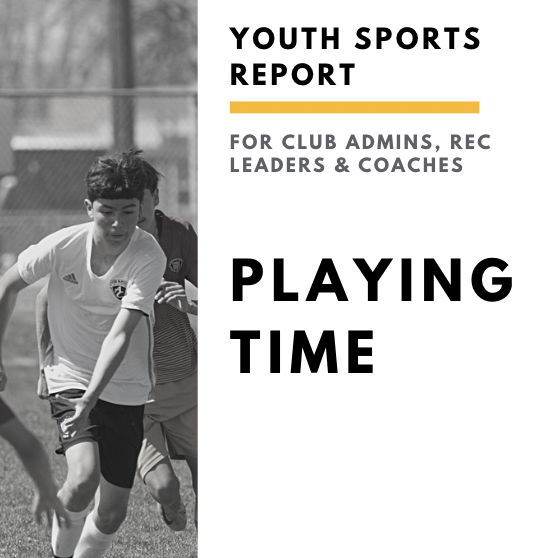Get our exclusive report. Download the iSport360 Club Switching Report Here – For Club Admins, Rec Leaders and Coaches.
How to Run Youth Sports Tryouts So It is Less Stressful
It is that time of the year when you are holding tryouts. We captured some very easy steps to run your youth sports tryouts. It is stressful for players, parents, and coaches. After running tryouts for over 8 years, I thought I would provide some tips and tricks to help along the way.
The goal for my tryouts is always to provide a fair and objective process for players. That includes the prep going into tryouts. Overcommunicating the process and rubric is key. This manages expectations for all involved.
STEP 1 – Prep Before Youth Sports Tryouts
Develop a Rubric or Player Evaluation Tool for Tryouts
I like to measure players using quantifiable metrics like a run test or skill course that is timed. While these metrics are weighed less overall, they provide more depth to your tryout. This is easier to do at the school level. The run test should be clear and easy to understand for a player so they can practice on their own before tryouts.
1 tip – make sure your rubric doesn’t have 20 areas of measurement. When assessing many players over a short period, it is difficult to measure many parts. Focus on what is important to help the team win and develop players. Many of the youth sports governing bodies have rubrics and tips on what to look for. iSport360 works with the governing bodies of the 9 sports and has an objective goals, standards and evaluations in place.
Communicate Rubric to Players and Parents
I can’t stress this enough, make sure everyone involved knows the process of the tryout and the measurement that will be in place. The more players and families know, the more likely they are to trust the process. The measurement tool you use should be the same tool you use to determine if players move up.
Have Materials Ready to Go for Coaches
This probably doesn’t seem important but I usually bring 1 packet per coach and plenty of pens and pencils. Some coaches like to use their phones but I find writing down scores and notes is faster and easier.
STEP 2 – During Tryouts
Welcome, Welcome, Welcome
Check everyone in and welcome them to tryouts. It is so important to have a friendly face for the players, this helps ease tension and makes people feel like they are welcome. While everyone is waiting to start, make sure that you review what will happen and when it will happen as it relates to the tryout and after the tryout. Once the tryouts are over, bring everyone together and repeat what you communicated at the beginning of the tryout. Lastly, communicate to all parents that night about the next steps. Again, you can not over-communicate the steps.
Use A Unique Identifier
Every player should be identified by a color pinny or number or both. This helps every coach during evaluations. The unique identifier should be linked to a file that shows the player’s name and the rubric. Coaches can better evaluate when the players are organized and clearly linked to the tryout evaluation document.
Manage Coaches
Make sure your coaches are NOT all together chatting, each one should walk around to evaluate. This is important and allows coaches to make their decisions objectively. It also shows coaches being present and focusing on what is the most important job that day – evaluating players.
STEP 3 – Post Tryout
Communicate
Make sure you communicate results when you say you will. If players will find out by Friday, make sure they receive a communication by Friday. There is nothing worse than saying one thing and doing something different.
Be Transparent
Players need to know what they did well and how they ranked against other players. It is ok to communicate that info but NEVER speak about another player. I allow players to ask where they rank across the teams so they can get an idea of how they did compared to others. Allow parents and players to reach out and ask what they could do differently to get better.
Building the Team
You can build teams off of your player evaluation tool. Determine what you need for each team by skill level, score and position. If you have a solid and objective rubric, it will be easy to rank them by their scores across the coaching staff.
For bubble players, these are players that may be good enough to play on the highest level team or maybe need more time to “cook” on the next level team. If they just aren’t at the same level as your top team or the next higher team, allow them to get some experience during practice handling higher levels of pressure. This way you can determine over a short period of time if they can handle the level of that specific team.
Good luck with your tryouts. Just follow these simple steps and remember that you won’t make everyone happy. That’s not the point of a tryout. Your goal as a coach or club administrator is to create the right level teams by players skill level.
iSport360 is the only app that does it all for youth sports. For more information on what we do, click here.
About the author:
Amy Masters is a sports mom, coach, and club administrator. She has been coaching youth sports for more than 10 years. She started Jr Lions Field Hockey, the youth recreation program for the Hunterdon County community growing it from 40 players in year 1 to 150 players by year 3. A few years later, she saw the love and competitiveness grow then started Omega Field Hockey Club serving NJ and PA players. Before coaching, she was a collegiate field hockey player for Lock Haven University. In her spare time (lol), she is head of marketing for iSport360 and the co-editor of the Youth Sports Survival Guide. The Youth Sports Survival Guide is the largest youth sports newsletter in the world.
Learn more or request a demo of our youth sports software that is helping teams improve communication, organization and player development.
March 13, 2024





